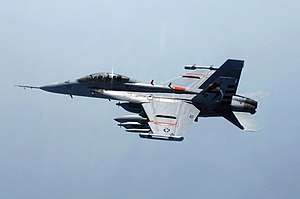
In his
2009 Annual Burgmann College Lecture, the Prime Minister proposed a
National Security College be set up by the Australian Government and the Australian National University. This would train senior civilian and military officers in strategic matters, including collaborative culture. A practical exercise which the new students could undertake is the design of the new
Collins class submarine replacement, combining strategic and technical options in the one process.
The Australian Defence Force (ADF) has proposed 12 submarines at a cost of $A25 billion (project
SEA 1000). However, there is no proven design for such submarines. Even if they could be built, it is not clear the Australian Government could use such a powerful weapon system effectively. Therefore it would be useful for a mixed team of policy specialists, military and technical specialists to consider what capabilities are feasible and how they might be used.
The preferred ADF option is for a larger version of the current
Collins class Australian-built diesel-electric submarines. Even if this is the best option, there are still many details to consider. As an example, one option is to use automation to reduce the crew of the submarine, allowing for more capability in a smaller space. That would require an analysis of what is possible with computer based systems to run a submarine. With effective use of automaton, it may be possible to provide all the desired capability in a submarine the same size as the current Collins class.
There are rapid advances being made in
autonomous underwater vehicles (robot miniature submarines). It is likely these will be used for missions currently undertaken by manned submarines. It is likely the Collins class replacement will be equipped to launch and recover several types of AUVs, but what types and for what missions? This will require a knowledge of robotics and AI.
The primary mission of the submarines will be to collect information and to attack shipping. With the development of long range accurate cruse missiles, the submarines may also act as a strategic deterrent. However, Australia does not have a process for making the rapid political decision needed to use such a deterrent. This would require consideration of the political process to be used, as well as how consultations would be made with advisers and the technical communications infrastructure to do that. Even the USA, which has invested considerable resources on strategic decision making over decades, found its
decision systems unable to cope with a relatively small scale attack on 11 September 2001.
The
Australian Department of Defence issued a Request for Tender for a "
Headquarters Joint Operations Command (HQJOC) Telepresence System". Government agencies are also investing in
telepresence systems. However, this would require not only technical compatibility between the military and civilian systems, but also compatible meeting procedures. While the military have long
practiced the use of such technology for decision making, this usually does not involve civilian decision makers. Also new systems such as
instant messaging on mobile devices create new options and well as creating a risk of subverting established processes. Scenarios could be investigated using tools such as the
Delphi Decision Maker.
New options are emerging, such as use of the
National Broadband Network, which will be a high speed, relatively secure and reliable network. The
"Defence Information and Communications Technology Strategy 2009" makes no mention 0f the NBN.
The ADF has envisioned the Collins class replacement as having a very long range. This is in part due to the long transit times from Australian submarine bases to likely patrol areas. An alternative would be to provide floating support facilities, which could undertake some replenishment at sea and major work at a friendly port.
Replenishment at sea (
Underway replenishment UNREP) is not favoured by submariners, due to limited space in a submarine making loading slow and dangerous, with most supplies being loaded by hand down narrow hatches. However, with the design of a new submarine comes the opportunity to incorporate containerised, automated stores handling. This would allow rapid transfer using automated cranes and helicopters.
The RAN's new
Canberra Class Landing Helicopter Dock ships will be equipped for rapid stores transfer, as will the Australian designed
Joint High Speed Vessels (JHSV) being built for the US navy. On a smaller scale the
Austal Multi-Role Vessel could be used with an unmanned helicopter, such as the
Kaman Aerospace Corporation K-MAX, for Vertical Replenishment (VERTREP). However, studies of the technical feasibility, strategic and political implications of this would be needed.
Standard unit loads would prove challenging to accommodate in a submarine. MIL-STD-1660 specifies a 1,016 mm × 1,219 mm 1,814 kg unit load and the "
Joint Modular Intermodal Container" (JMIC) is 51.75”L X 43.75”W X 43”H which would be difficult to load into and move about in a submarine. However, the benefits for solving this problem would be substantial. Containerisation of stores and equipment has begun to change the design, operation and strategic uses of surface warships, such as the
Absalon class command ship. The same could be applied to submarines, making them quicker to load, replenish and reconfigure.
Proving access ways to accommodate standard unit loads would also allow equipment on the submarine to be palletised and easily replaced. This would allow equipment to be swapped out for maintenance and for different missions. One application of this would be for power. The Collins class vessels have experienced
problems with the Hedemora diesel engines. These cannot be easily replaced due to their size. Smaller palletised power units could be removed for service.
Labels: Australian Defence Force, blended meetings, defence technology






 The US Department of Defence has contracted
The US Department of Defence has contracted 



